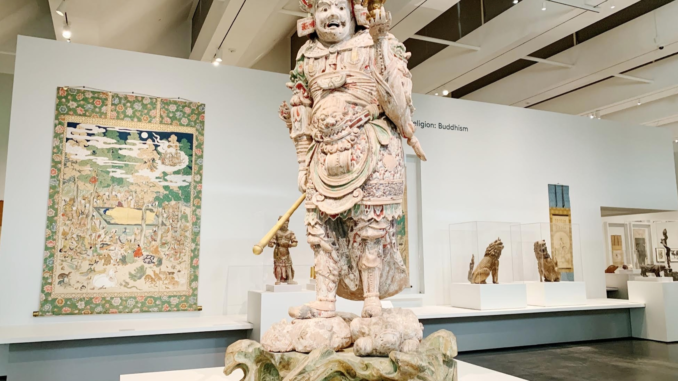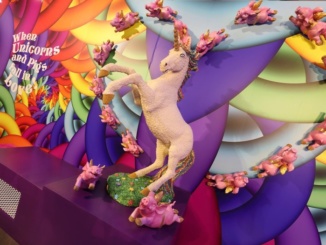
Remy Bailard
Staff Writer
The Los Angeles County Museum of Art introduces “Every Living Thing,” an innovative exhibit which displays several different types of medias showcasing Japan’s vast history in a unique way that makes the entire room captivating.
“Every Living Thing: Animals in Japanese Art” creatively uses elements of Japanese culture, including its animals, to reveal their symbolism in Japan’s society, and how they play a large role in establishing the country’s religions and lifestyles. The exhibit was intriguing and perfectly showcases Japan’s culture.
The exhibit is organized into several themes including Religion, The Natural World, The World of Leisure, Myth and Folklore, and Zodiac Animals. Animals play active roles in each of these aspects of Japan’s culture and serve as deities and often symbolize protection or companionship as shown by the paintings and statues on display. Around the room are multiple ceramic pieces that each have symbolic animals to represent Japanses beliefs. Ceramics are daily items used in Japan and were essential to those living there as shown by the displays.
As viewers continue through the gallery, the time period gets closer to the present day and the viewer can clearly see an advancement in many technologies as well as new artistic techniques. At the end of the viewing area, there are four digital panels aligned that are designed to show the evolution of Japanese culture and how it has spread throughout the United States. Founders of this new exhibit continue to move forward with the intentions to show Japanese culture and bring even more of Japanese traditions to new countries. This exhibit was thought-provoking and riveting for viewers, due to the several displays of art.
A highly notable piece is the “Bishamonten: Guardian King of the North” sculpture. This Bishamonton sculpture was created in 1124 during the Heian period and is about four feet tall. It is extremely eye catching as the viewer walks into the room seeing as it is one of the tallest displayed pieces in the entire exhibit. This sculpture is incredible to see and each detail shows the intricate craftsmanship of the art.
Another key piece of work is the “Sunflower Phoenix,” an impressive digital artwork from the Fleeting Flowers series. The pixelated work displays one of the primary mythical creatures that is known to the Japanese, the phoenix. The work is displayed on a loop, which allows viewers to follow along with the process of creating this modernized interpretation of Japanese art. This piece of work was extremely vibrant and adds color to the room, showing many of the artistic advancements in technology.
The “Ten Ox Herding Pictures” accentuates the use of different inks to showcase a different media. The ink painting shows a fierce ox trying to be tied down with ropes, which was incomparable to the other paintings displayed because it appears to be simple, while actually utilizing many techniques, including different brush strokes, to make it look the way it does.
One of the most remarkable pieces on display is the Incense Burner Set that was created during the 18th century. This particular set is significant to this exhibit, resembling one of the most spiritual creatures in Japan, the sea turtle. This item displays new materials, including stone, making it different than the rest of the museum due to its dissimilar materials. The multiple piece set is a bright turquoise color.
Another noteworthy work of art shown in the gallery is the “Puppies among Bamboo in Snow” panel screen. It gives an interesting look at Japan’s environment, which most viewers would not typically think of as a cold, harsh winter. The snow among the trees makes the work unique, seeing as many artists illustrating Japan pay close attention to Spring and the abundance of cherry blossoms. This piece is impressive seeing as it tells a story as viewers look from one panel to the next, which makes it engrossing.
The “Every Living Thing” exhibit covered every aspect of Japan’s culture in an interesting way for viewers. The displays were well-organized and provide information on each item to talk more about its part in Japan’s rich history. Each display showed different forms of art in very detailed and amusing displays that made the entire exhibit very entertaining for visitors.
“Every Living Thing: Animals in Japanese Art” is open until December 8 in the Resnick Pavilion building of LACMA. For more information on the art displayed and business hours, visit lacma.org.




Leave a Reply